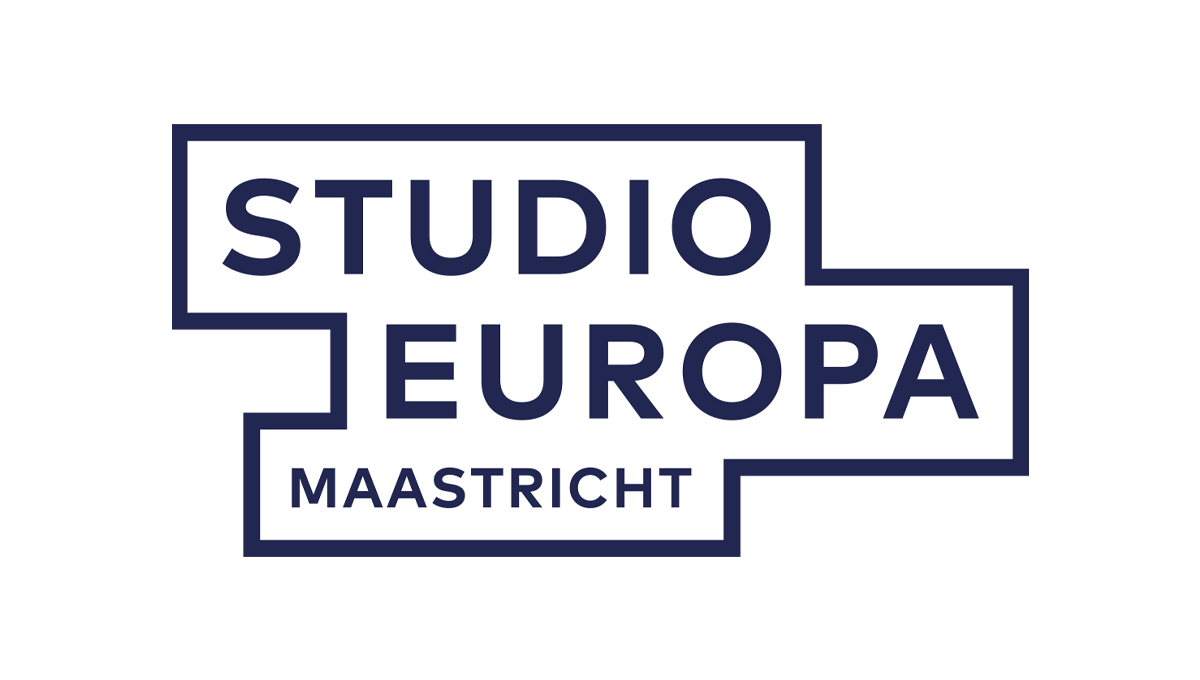A race against time and fraud
Billions in grants intended to help member states after COVID-19 emanate from the EU’s Recovery and Resilience Facility. But potentially fraudulent use of funds and concerns about transparency bring the integrity of the RRF – and the EU itself – into question.
In the wake of the COVID-19 pandemic, the European Union (EU) launched its most ambitious recovery plan since the Marshall Plan. The Recovery and Resilience Facility (RRF), a cornerstone of the NextGenerationEU initiative, promised a staggering €723 billion in grants and loans to member states.
Now, as the 2026 deadline approaches, a critical question emerges: Will these funds deliver on their promise of putting Europe back on its feet, or might they instead generate a crisis of trust among EU citizens and offer the far right an easy target in its ongoing anti-EU campaign?
The programme faces increasing scrutiny over its transparency, vulnerability to fraud and the challenges associated with its implementation. There are also questions over the integrity of the RRF, as a string of recent fraud cases demonstrates.
In June 2024, the European Public Prosecutor’s Office (EPPO) apprehended three suspected ringleaders of a criminal organisation created to defraud the fund. The group had allegedly established companies or taken over inactive ones – some of which had no physical offices or had not submitted any tax returns for more than 20 years – to apply for RRF funds. The group had successfully obtained initial payments of around €490,000, before immediately syphoning the money from the companies’ bank accounts.

‘NextGenerationEU’ poster on the façade of the Berlaymont building, Brussels 2021. Image by the European Commission via Wikimedia commons.
This case came in the wake of another large-scale EPPO operation in April 2024, which saw the arrest of 22 individuals in four countries: Italy, Austria, Romania and Slovakia. They are currently under investigation for their alleged involvement in an organisation suspected of defrauding Italy’s RRF of €600 million euros over two years.
The members of this organisation had applied for non-repayable grants awarded to support the digitalisation, innovation and competitiveness of small and medium-size companies, with the goal of helping them expand their business activities to foreign markets.
These incidents are not isolated. The EPPO’s 2023 Annual Report revealed 233 active funding fraud investigations related to the RRF in EU member states – the fourth-largest number of active EPPO investigations into an EU programme. Of these 233 investigations, a staggering 179 were in Italy alone, with 33 detected in Austria, the country with the second-highest number of cases.
Criticism of the RRF’s lack of transparency has been mounting among EU institutions and nonprofit organisations. The limited requirements on disclosure – member states must only name the top 100 recipients – and the absence of dedicated RRF country websites make detecting and pursuing irregularities challenging for oversight bodies like the European Public Prosecutor’s Office (EPPO), the European Court of Auditors (ECA) and OLAF (the European Anti-Fraud Office).
Unlike the EU Cohesion Fund, where spending is monitored based on actual costs, the RRF operates on a performance-based system. Payments are made upon the achievement of milestones and targets rather than tracking project expenditures. This lack of data collection and reporting significantly hampers the ability of EU institutions to effectively oversee the RRF.
A transparency deficit
Critics argue that the RRF was flawed from its inception due to a lack of transparency, creating an environment that was susceptible to fraud and mismanagement during the implementation phase. Unlike other EU initiatives such as the Cohesion Fund, the RRF’s governing legislation (Regulation 2021/241) does not include strict requirements for reporting and public oversight.
In the case of the RRF, the EU member states are considered to be the final beneficiaries. Consequently, only the amounts allocated to member states were recorded and made public, without detailing the individual beneficiaries (both natural and legal persons) at ground level. Nationally, the RRF Regulation did not mandate public disclosure of this information, with the sole requirement the provision of information to the EU’s control mechanisms.
The European Parliament, alongside other institutions like the European Ombudsman, kept pressing for increased transparency. In a November 2021 resolution, the Parliament asked for data to be collected ‘on those ultimately benefitting, directly or indirectly,’ from RRF funding.
While in 2023 the European Commission took some steps to improve transparency by requiring member states to publish data on their top 100 RRF beneficiaries, which needs to be updated twice a year, many, including European Ombudsman Emily O’Reilly, consider this insufficient.
‘The Ombudsman continues to believe that public information on all of the final recipients is crucial for meaningful accountability for the spending of these funds’, a European Ombudsman spokesperson told Eurozine.
O’Reilly sees ‘no reason why this level of transparency should be problematic to implement’, since ‘the RRF Regulation already requires the member states to collect the names of final recipients of funds for audit and control purposes’.
‘This granular detail’, the spokesperson added, ‘will allow for a proper check of whether individual projects are in line with approved objectives, and for monitoring of potential conflicts of interest, fraud and corruption’.
In 2022, the Ombudsman opened a investigation into the RRF’s transparency and accountability. In 2023, following answers from the Commission, she closed the case, noting some progress.
However, O’Reilly continues to monitor the Commission’s supervision of the RRF. Backed by the European Parliament, she recently criticised delays in handling public document requests.
The EC response: transparency or translucency?
How did the Commission respond to the mounting criticism of the RRF’s transparency? By publishing an interactive map of RRF-supported projects across member states.
‘This map is regularly updated and populated with an increasing number of projects. At this stage, the map contains information on more than 350 measures included in member states’ recovery and resilience plans’, a Commission official told Eurozine in July 2024. ‘The map is a living project and numbers will increase with its updates’, the official explained.
With EU member states such as Romania, Italy, Croatia and Greece each having over 100 investment streams and 60 reforms earmarked for RRF funding, the map’s current offerings appear limited. The quality of information varies significantly between countries, with some providing detailed descriptions, while others offer brief overviews.
The European Commission official highlighted the RRF Scoreboard as another example of transparency measures. This platform aims to provide comprehensive data on all disbursements made to member states, milestones and targets assessed as fulfilled by the Commission, RRF common indicators and the top 100 recipients per country.
However, a 2023 ECA report criticised the Scoreboard’s transparency, noting that it failed to disclose that the figures reported for the common indicators include estimates, rather than concrete figures, with a few exceptions. This raises questions about the accuracy of the RRF’s reported progress and performance.
The report also pointed out that the Scoreboard fails to acknowledge that some reported achievements might not be entirely attributable to RRF funding, as member states often report overall progress in implementing reforms and investments, even when partly funded by national budgets or other EU sources. This could potentially overstate the RRF’s direct impact.
Is EU oversight falling short?
Concerns are also growing over the EU’s ability to monitor RRF fund usage, a problem that threatens to escalate as the 2026 deadline approaches. In a March 2024 discussion with reporters, ECA director Tony Murphy highlighted the issue, expressing ‘serious reservations’ about the disbursement of RRF funds.
At the heart of Murphy’s concern is the stark difference in oversight between the RRF and traditional EU spending. While regular EU budget expenditure is subject to rigorous monitoring by the Commission, with oversight from institutions like the ECA and OLAF, the RRF operates on a different model. For RRF funds, member states are largely responsible for self-policing, significantly reducing the EU’s direct oversight.
This shift in responsibility, Murphy warns, ‘increases the risk of irregularities or even corruption’. The problem is compounded by the unpreparedness of many national oversight bodies, which often lack the capacity – rather than the will – to effectively monitor fund usage.
A 2022 ECA report also highlights the difficulty of appraising ‘qualitative achievements’ based on the RRF’s performance-based model. According to the report, this ‘requires multiple judgements, leading to a variety of possible interpretations. Furthermore, in our audit work we repeatedly come across milestones or targets that are vaguely defined, meaning it is difficult to assess whether or not they have been achieved’.
Even so, by the end of 2023, the Commission deemed only 19 percent of the milestones set by all EU countries to be satisfactorily fulfilled, according to ECA’s most recent report, published in September 2024.
The monitoring challenge is set to intensify as the 2026 deadline looms. With only two years of implementation remaining, a mere third of the total RRF funds has been disbursed – approximately €170 billion in grants and €90 billion in loans by September 2024.
Murphy stressed that the time pressure could significantly contribute to the risk of the misappropriation of funds. As member states rush to utilise their allocated funds before the deadline, there is an increased likelihood of both unintentional spending mistakes and deliberate misuse through opportunistic behaviour and shortcuts.
Public trust on the line
In combination, all of these shortcomings have led Murphy to express scepticism that the RRF should be continued after its 2026 deadline. His concerns are compounded by the fact that many countries are indeed struggling to meet the Recovery and Resilience Facility’s implementation timeline.
Countries like Bulgaria and Austria have spent a third or less of the RRF budget allocated. Of even greater concern is that two countries, the Netherlands and Sweden, have yet to receive any grant payments, while Ireland only received its first funding disbursement in July 2024.
Krzysztof Izdebski from the Open Spending Coalition EU, a collaboration of activists, journalists and professionals working to ensure open, fair and accountable public spending in the EU, paints a sobering picture.
‘After the midterm reports on the RRF’, he stressed, ‘we see that a lot of countries are late with implementation, with many of the investments not being yet accomplished. There are some talks about postponing the RRF deadline, because it won’t look good if many of the projects and reforms are not finalised’.
Some of the reasons for these delays are ‘objective problems’ beyond countries’ control, Izdebski notes, including events such as Russia’s invasion of Ukraine, which brought inflation and increased prices, or labour shortages in countries such as Portugal and Germany.
Still, the consequences of these events could be far-reaching. Izdebski warns of a potential crisis of public trust in the EU if the RRF’s implementation falls short of promises and expectations.
‘The public will not see these as objective reasons but will connect it with the lack of transparency’, he noted. ‘The European Commission will have to explain the countries were not stealing money but had serious reasons why the RRF initiatives could not be fulfilled on time’.
‘With greater transparency on the funds’ use, we could have spotted much easier that they were not being spent on time and this could have been communicated to the general public as well’, he added.
If projects and reforms are not implemented on time and the reasons are not properly communicated, this could be exploited by the far right, who would be able to further stoke anti-EU sentiment by pointing to the RRF as a failure and waste of money.
Experts argue that simple, tried-and-tested tools and resources could have improved transparency from the outset. Luigi Reggi, who runs the Italian non-profit organisation Monithon, suggests that ‘one of the most straightforward solutions’ could have been to simply replicate the OpenCoesione portal used for the Cohesion Funds in Italy for the RRF, making data more easily accessible to the general public.
For Reggi, accessing RRF data in Italy currently entails a painful, manual process. ‘I download all the data for Italy and then I filter for the territory that I am interested in, for instance, the list of projects in the province of Bergamo’, Reggi explained. ‘Then I have to sift through all the projects and find the ones that would be most interesting to the citizens we work with there’.
His organisation works to involve young people and non-profits in monitoring EU-funded projects in their communities, in the belief that this engagement builds citizenship and understanding of EU funding mechanisms, including, but not limited to the RRF. They use tools for participatory evaluation of these projects and their final beneficiaries.
With regard to the RRF funds in Italy, Monithon worked with the financial daily Il Sole 24 Ore to put together an interactive map of all the RRF-funded nursery schools. The map was published on the outlet’s website, alongside a call to readers to send in civic monitoring reports about them. Monithon has received relatively few reports from the general public so far but plans to do more to engage a greater audience.
Cause for optimism
There is a notable disconnect between the warnings from oversight bodies and watchdogs and the EU leadership’s position on the RRF. Many high-level Commission representatives remain enthusiastic about the RRF’s effectiveness and its future within EU funding initiatives.
This optimism is understandable for several reasons, chiefly that the EU has managed to avoid a financial crisis as severe as the one in 2008-2009. European Commissioner for Economy Paolo Gentiloni stressed that the ‘European economy returned to its pre-pandemic output level by the third quarter of 2021 – much sooner than expected. This was very different to what happened in the wake of the financial crisis, when it took seven years for output to fully recover’.
Eulalia Rubio, a senior research fellow at the Paris-based think tank Jacques Delors Institute, agrees with Gentiloni on the RRF’s role in preventing a financial crisis. ‘Before the announcement of NextGenEU’, she explained, ‘interest rates were jumping. Countries with high levels of debt, like Italy and Spain, were in a true crisis, and the financial markets were very tense. There was a significant risk of entering another financial crisis, and the RRF prevented this’.
Rubio also pointed to successes in reforms implemented by various countries. ‘Some reforms that were difficult to pass in some EU countries, like the labour market reform in Spain or the judiciary reform in Italy, have been adopted, at least partly thanks to the RRF’.
However, Rubio cautioned that estimating the impact of these reforms is challenging. ‘Take Hungary, for instance. It passed the judiciary reform law. The question is if and how they will implement it’, she said.
Gentiloni took issue with Murphy’s claim that meeting the RRF’s deadline is impossible. He emphasised that over half of all milestones and targets are expected to be met by the end of 2024 and reiterated that the ‘2026 deadline is a firm one’, urging member states to maintain or accelerate their efforts to fulfil all obligations.
Gentiloni also advocated for making the RRF a permanent EU funding instrument, arguing that its current ‘temporary nature’ has prevented the bloc from reaping the ‘full benefit of this common borrowing’.
He suggested that the RRF’s design could be ‘a useful blueprint’ for future EU initiatives. This is indicative of a broader sentiment of enthusiasm and support for the RRF, including its current mode of operation, among some high-level Commission representatives.
Despite warnings from the ECA of potential fraud and corruption, Commission Executive Vice-President, Valdis Dombrovskis, has suggested that the EU should exert less, not more, control over the disbursements of RRF payments.
Speaking at a press conference presenting the Commission’s mid-term evaluation of the Recovery and Resilience Facility, he cited feedback from member states calling for ‘greater flexibility and simplification’ in the accumulation of data collection requirements for audit and control purposes. Dombrovskis insisted that current checks and audits are sufficient.
EU Budget Commissioner, Johannes Hahns, has gone one step further, suggesting that he would not be opposed to the idea of making the entire EU budget ‘performance-based’ rather than cost-based, as is the case with the RRF.
This could potentially reduce oversight across EU spending in general, raising concerns about accountability and fraud prevention.
The clock is ticking
Hahns’ vision for a performance-based EU budget hinges on one crucial factor: the RRF’s ultimate success. But as the RRF races towards its 2026 deadline, it faces the risk of not only falling short of its economic promises but also potentially eroding public trust in EU institutions.
If the RRF falls short of its lofty goals – and fails to effectively communicate the reasons why – it risks becoming a rallying point for Eurosceptics. Far-right groups, in particular, stand ready to exploit any perceived failures, potentially turning the EU’s flagship recovery programme into a symbol of institutional incompetence.
The EU now faces a critical test: Can it address the transparency and fraud concerns while ensuring the timely and effective implementation of the RRF? The answer will likely shape the future of EU fiscal policy and public trust in the institution for years to come. As the clock ticks down, the stakes for the European project have never been higher.
Published 5 September 2024
Original in English
First published by Eurozine
© Raluca Besliu / Eurozine
PDF/PRINTIn collaboration with
In focal points
Newsletter
Subscribe to know what’s worth thinking about.
Related Articles

Donald Trump’s impending return to the White House has broad repercussions. His unpredictable approach to foreign policy could leave an even greater impact on the world than it did in his first term. Both Kyiv and Moscow have been preparing for the potential scenario of a second round.

The debate between Keynes and Hayek must be between a historically accurate Hayek and a historically accurate Keynes. Only then can the differences – and the common ground – between these two key economists of the mid-20th century be understood.






